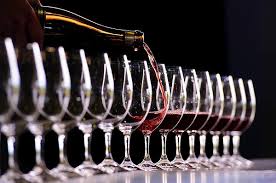 Las Ramblas is the ‘HEART’ of Barcelona. For more than a century, townspeople have gathered along this lively promenade to chat, stroll, shop or drop into a cafe for coffee, tapas or a meal. Tree-lined, Las Ramblas is a 3/4 mile pedestrian walkway that runs from Playa Catalunya (Barcelona’s large central plaza) to the Colon (Columbus monument) at the waterfront. Las Ramblas is a colorful parade of historic buildings, architectural elemnts, artisan shops, flower stalls, posing human statues, musicians – AND the not-to-be-missed Boqueria Food Market.
Las Ramblas is the ‘HEART’ of Barcelona. For more than a century, townspeople have gathered along this lively promenade to chat, stroll, shop or drop into a cafe for coffee, tapas or a meal. Tree-lined, Las Ramblas is a 3/4 mile pedestrian walkway that runs from Playa Catalunya (Barcelona’s large central plaza) to the Colon (Columbus monument) at the waterfront. Las Ramblas is a colorful parade of historic buildings, architectural elemnts, artisan shops, flower stalls, posing human statues, musicians – AND the not-to-be-missed Boqueria Food Market.
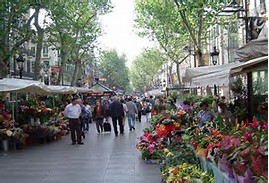 We will spend an afternoon on Las Ramblas led by our tour guides who will introduce us to the historical monuments, Barcelona’s cathedral and plazas along the way. We will also drop into the some of the unique artisan shops. Guests will be able to wander Las Ramblas individually or stay with the guides/group for a tour. Our plan is provide the opportunity to ramble Las Ramblas whichever way you choose.
We will spend an afternoon on Las Ramblas led by our tour guides who will introduce us to the historical monuments, Barcelona’s cathedral and plazas along the way. We will also drop into the some of the unique artisan shops. Guests will be able to wander Las Ramblas individually or stay with the guides/group for a tour. Our plan is provide the opportunity to ramble Las Ramblas whichever way you choose.
 Our guides will take the group to the bustling Boqueria Food Market on Las Ramblas. With it’s plethora of food purveyors from charcuterie meats, fish, vegetables, fruits, wines, cheeses, olive oils and artisan foods to small tapas cafes, there much to discover at La Boqueria. It’s a bustling marketplace to experience the culture of Barcelona with all of the senses.
Our guides will take the group to the bustling Boqueria Food Market on Las Ramblas. With it’s plethora of food purveyors from charcuterie meats, fish, vegetables, fruits, wines, cheeses, olive oils and artisan foods to small tapas cafes, there much to discover at La Boqueria. It’s a bustling marketplace to experience the culture of Barcelona with all of the senses.
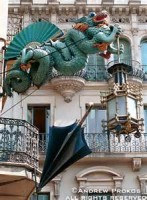 On our way, we will wander off Las Ramblas into the Bari Gothic/Gothic Quarter, the oldest part of the city. The Bari Gotic was the site chosen by the Romans in the reign of Augustus (27 BC – AD 14) on which to found a new colonia (town). Today it is the seat of Catalonia’s government and the Casa de la Ciutat, Barcelona’s Town Hall. Barcelona’s Gothic Cathedral is in the Barri Gothic as well as the Royal Palace where Columbus was received by Fernando and Isabel on his return from the New World in 1492.
On our way, we will wander off Las Ramblas into the Bari Gothic/Gothic Quarter, the oldest part of the city. The Bari Gotic was the site chosen by the Romans in the reign of Augustus (27 BC – AD 14) on which to found a new colonia (town). Today it is the seat of Catalonia’s government and the Casa de la Ciutat, Barcelona’s Town Hall. Barcelona’s Gothic Cathedral is in the Barri Gothic as well as the Royal Palace where Columbus was received by Fernando and Isabel on his return from the New World in 1492.
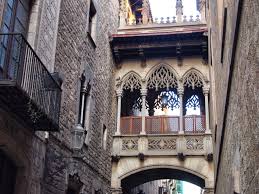 The Bari Gotic is one of the most extensive medieval city centers in Europe. Made up of narrow cobblestone streets and medieval buildings, today it is a mix of historic landmarks, residences, shops, cafes and pubs. We will walk some of the quaint streets in the Bari Gotic, stop at the cathedral to hear about its Romanesque and Moorish architecture and explore alleyways and quirky shops along the way.
The Bari Gotic is one of the most extensive medieval city centers in Europe. Made up of narrow cobblestone streets and medieval buildings, today it is a mix of historic landmarks, residences, shops, cafes and pubs. We will walk some of the quaint streets in the Bari Gotic, stop at the cathedral to hear about its Romanesque and Moorish architecture and explore alleyways and quirky shops along the way.
 Once at Port Vell on the waterfront, we’ll see Barcelona’s yacht harbor, the sparkling Mediterranean Sea and stroll the boardwalk.
Once at Port Vell on the waterfront, we’ll see Barcelona’s yacht harbor, the sparkling Mediterranean Sea and stroll the boardwalk.
All in a day…experiencing the best of Barcelona at the direction of our knowledgeable guides! Those who want to see more, can do so. Those who want to return to the hotel after a full day, can do so. This is a group tour with as much flexibility and down-time, as needed – that is our goal!
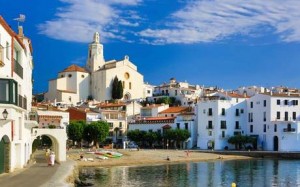 Some say that if you have time for only one stop on the Costa Brava, be sure it is Cadaques. (We will have more than one stop along the Costa Brava, and this will definitely be one of them!)
Some say that if you have time for only one stop on the Costa Brava, be sure it is Cadaques. (We will have more than one stop along the Costa Brava, and this will definitely be one of them!) Cadaques attracted celebrity crowds for decades largely due to Dali. One visit by the poet Paul Eluard and his Russian wife, Gala, in 1929 caused an explosion in Dali’s life. Gala became Dali’s obsession whom he later married. Shortly thereafter, he joined the Surrealist movement to become one of its key figures. Dali and Gala lived an eccentric and lavish lifestyle in Cadaques.
Cadaques attracted celebrity crowds for decades largely due to Dali. One visit by the poet Paul Eluard and his Russian wife, Gala, in 1929 caused an explosion in Dali’s life. Gala became Dali’s obsession whom he later married. Shortly thereafter, he joined the Surrealist movement to become one of its key figures. Dali and Gala lived an eccentric and lavish lifestyle in Cadaques.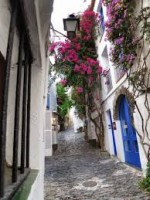
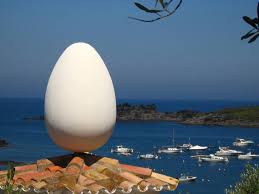 We will have an afternoon to wander the streets of Cadaques, have lunch and experience this beautiful Spanish village with its unique history.
We will have an afternoon to wander the streets of Cadaques, have lunch and experience this beautiful Spanish village with its unique history. In Barcelona, guests on our Spain tour (June 1-12, 2016) will engage in a wine seminar with tastings of 10 Spanish wines and cavas. We’ll taste Spanish reds, whites, roses and cavas (sparkling). The wines will range from young to reserve and those in between. Gourmet food tastings will accompany each wine. Our instructor will be a Spanish Sommelier who will guide us in this exploration and learning process.
In Barcelona, guests on our Spain tour (June 1-12, 2016) will engage in a wine seminar with tastings of 10 Spanish wines and cavas. We’ll taste Spanish reds, whites, roses and cavas (sparkling). The wines will range from young to reserve and those in between. Gourmet food tastings will accompany each wine. Our instructor will be a Spanish Sommelier who will guide us in this exploration and learning process.
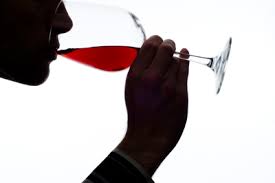 Taste
Taste